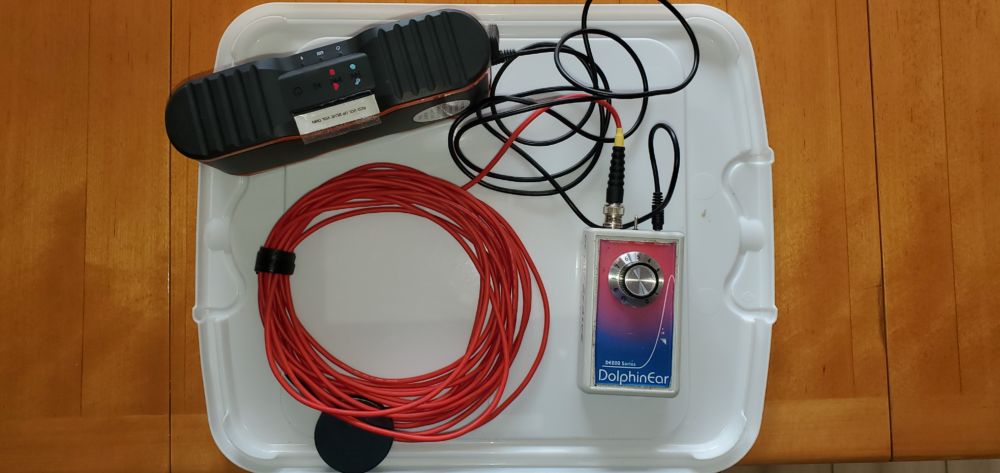Hydrophone / Nest Videos
For the past five years nest parents and other N.E.S.T. volunteers have used stethoscopes and then later on sophisticated hydrophones to listen to nests and the noise made by embryos/hatchlings as they hatch and then make their way to the surface of the sand. By identifying and classifying these sounds volunteers can better determine when hatchlings are ready to emerge.
**** N.E.S.T.’s work is done under and is in compliance with Endangered Species Act Permit 22ST10 and complies with all NCWRC permit requirements
Embryos and hatchlings vocalize making burping, chirping and/or mewing sounds for up to ten days before emerging from the nest. Pipping sounds like someone tapping or scrapping as embryos struggle to open the egg shell. Once out of the shell, hatchlings move around beneath the sand. It sounds like gentle sand movement or “furniture moving.” The falling sand of a hatchling making its way to the surface sounds like a “waterfall” or even a “roaring waterfall” when emergence is imminent.
Hydrophone Recordings:
The types of sounds we hear can give us clues about the nest’s stage of development. Vocalizations, for example, can be heard at any stage but are heard most frequently as made by embryos (i.e. in the shell). Tapping sounds come from embryos trying to first pip their way out of the shell. Falling sand or “gentle waterfalls or rustling” sounds are made by hatchlings as they leave the confines of the egg shell or make their way up the column of sand to the surface. As more and more hatchlings are involved the waterfalls become louder or even roaring and are much later in the process.
Not all sounds heard at the nest are made by turtles. Sounds coming from the ocean, human activities or other creatures on the beach can easily be confused for turtle sounds. Careful listening and observation of beach activities can usually determine the source. Examples of the noises heard are below.
Sounds made by movement of hatchlings or embryos:
Rustling - 60 seconds
Rustling and vocalizations - 38 seconds
Furniture moving - 10 seconds
Furniture moving - 1 min 25 seconds
Furniture moving and waterfall
Sounds made by vocalizations:
Roaring Waterfalls - 2 minutes
Vocalizations and furniture moving
Various vocalizations - compressed - 3 minutes
Sounds from non turtle source:
Crab Scampering
Blowing sand
Waves

